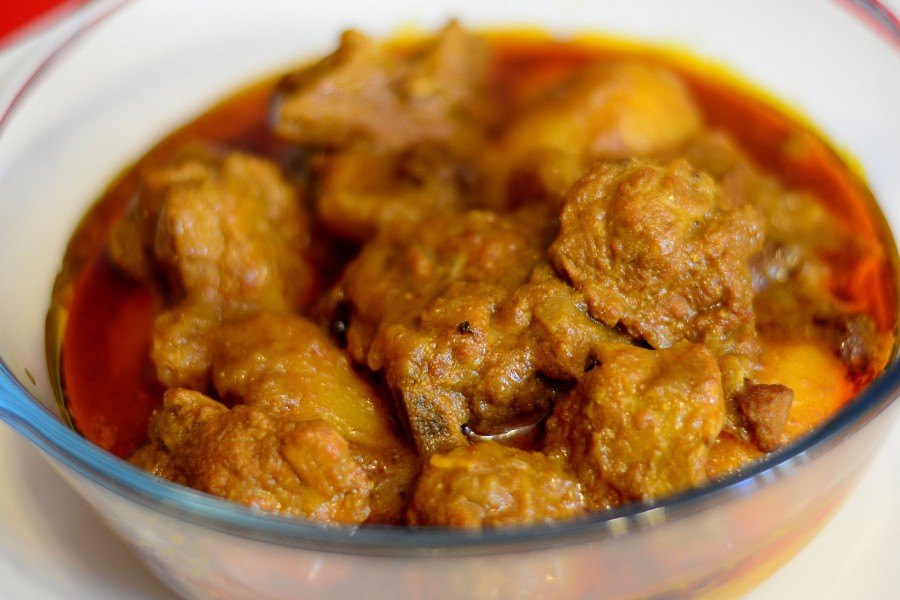This is the time of year when people salivate at the thought of succulent cuts of sacrificial meat. The rich loosen their purse strings to snap up prized cattle from ubiquitous haats. Passersby glance adoringly at racing cattle and their panting attendants. Eid al Adha presents the poor with that rare opportunity - tasting and sharing good quality meat.
As we gorge let us also reflect on the ecological, environmental, health and socio-cultural implications of the livestock industry and its corollary, meat consumption. Livestock rearing, meat processing and trading contribute handsomely to the economies of many countries. There is no dearth of research on different aspects of this topic making it a lively and controversial one.
Diet is very personal and influenced by one's culture, upbringing and of course income. Meat is an important source of protein (necessary for building muscles and maintaining healthy bones) and micronutrients like iron, zinc and vitamin B12. Meat in diets varies within and across societies. Diet progressively becomes more diversified as incomes rise. People direct more of their dollars toward meat and processed /packaged foods. China is an example.
Two salient reasons for the projected growth in meat consumption are: a rise in population and the fact that prices of meat have decreased relative to incomes. Lately, the consumption of chicken has surpassed beef and pork, welcome news in terms of human health and the environment.
First-hand data on meat consumption isn't available but rather derived from self-reported dietary surveys and 'food balance sheets'. In turn, food balance sheets are derived from national agricultural and trade statistics. Latin Americans are known for the most generous helpings per day of meat, Asians the least. Tofu, soy meal and legumes are held up as good meat substitutes. Pundits say it is possible to get equivalent nutrition with a varied diet; but such factors as price, convenience and availability make it all but impractical.
There is scientific evidence that eating meat is associated with the risk of chronic diseases. While this has not been settled beyond doubt experts are unanimous about the inimical effects (e.g., colorectal cancer) of processed meat, whether made from cattle or poultry. Livestock, being carriers of pathogens, may infect those humans who are in close proximity. Additionally, antibiotics are being used widely in meat production both as medicines and growth promoters. The danger is a resistant strain may develop in agricultural settings and get transferred to human pathogens.
Livestock production constitutes about 40 per cent of agriculture. Agriculture, a water-intensive activity, is both a cause of, and affected by, global warming. Water used for growing animal feed (corn and soya) accounts for an astounding 98 per cent of the total water consumed in meat production.
Fortunately, a lot of the water for growing feed crops comes from rain. However, when ground water is also used this leads to aquifer depletion leaving less quantity for other uses (e.g., irrigation). Bovine farming is three times as water-intensive as poultry farming.
Humans are responsible for three types of greenhouse gases (GHG): carbon dioxide (CO2), methane, and nitrous oxide (N2O). All three are released from meat production from excreta, flatulence and belching and comprise about 4.0 per cent of all GHG emissions. Ruminant cattle (cows and sheep) are the worst offenders.
This industry is the single biggest source of methane. In some locations cattle is growing in size. Combined with an increase in their numbers, this factor will increase methane emissions sharply tapering off 60 years out. Although the use of manure instead of fertilisers limits GHG emissions reducing GHG-producing meat production, especially beef, is a more efficient strategy.
As for ecology, land conversion to agriculture is a direct way in which meat production affects biodiversity. Land, most often forest, is converted to grasslands for grazing and/or cropland for producing crop feed. Grazing has both good and bad sides. Firstly, livestock excreta are good for plant growth. Secondly, an absence of tilling traps subsoil carbon. On the other hand, reduced plant cover and trampling on slopes leads to soil erosion and further loss of biodiversity.
Raihan Amin is Part-time Faculty,United International University.


